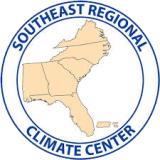Southeast Climate Monthly Webinar: May 23, 2023
Despite recent cooler temperatures, many locations in the Southeast are still experiencing one of their warmest starts to the year due to higher temperatures in the first four months. Precipitation was more variable. The region is largely free of drought at this time, with the exception of the Florida Peninsula, Puerto Rico, and the U.S. Virgin Islands. A transition from ENSO-neutral is expected in the next couple of months. River streamflows are mostly in the normal range across the region, which is typical for this time of the year.
Looking Ahead: Cool and wet conditions are expected over the next two weeks, and warm weather is expected during weeks 3 and 4. Over the next three months, temperature and precipitation are expected to be above average with drought removal likely across the region. The Summer Flood Outlook (June–August) is forecasting typical river flood risk for the interior Southeast river systems. However, we need to watch for tropical activity coming up as tropical storms typically affect the Southeast in June through early July and in late August into early October.
Check out this month’s two special presentations: “Using a web-based tool to forecast local variations in wet bulb globe temperature” from Chris Fuhrmann at the Southeast Regional Climate Center, and “Improved and expanded state pages on Drought.gov” from Kelsey Satalino at NOAA’s National Integrated Drought Information System (NIDIS).
About This Webinar
The Southeast Climate monthly webinar series is hosted by the Southeast Regional Climate Center, the National Integrated Drought Information System (NIDIS), and the NOAA National Weather Service. These webinars provide the region with timely information on current and developing climate conditions such as drought, floods, and tropical storms, as well as climatic events like El Niño and La Niña. Speakers may also discuss the impacts of these conditions on topics such as agriculture production, water resources, wildfires, and ecosystems






